In this article, I’ll explain Does A USB Monitor Require VGA Card? A VGA card is not compulsory for a USB monitor. I don’t have any display adapter (VGA card) for my little Intel x86 computers. Nonetheless, many of my own include an extra BIOS firmware module that will reroute the BIOS SETUP to the serial port COM1/dev/ttyS0. Currently, BIOS versions need to support USB video adapters, and it’s doubtful they will ever.
Does A USB Monitor Require VGA Card?
No, a USB monitor cannot display information from a VGA card. On the other hand, a USB monitor needs to show a USB card or port.
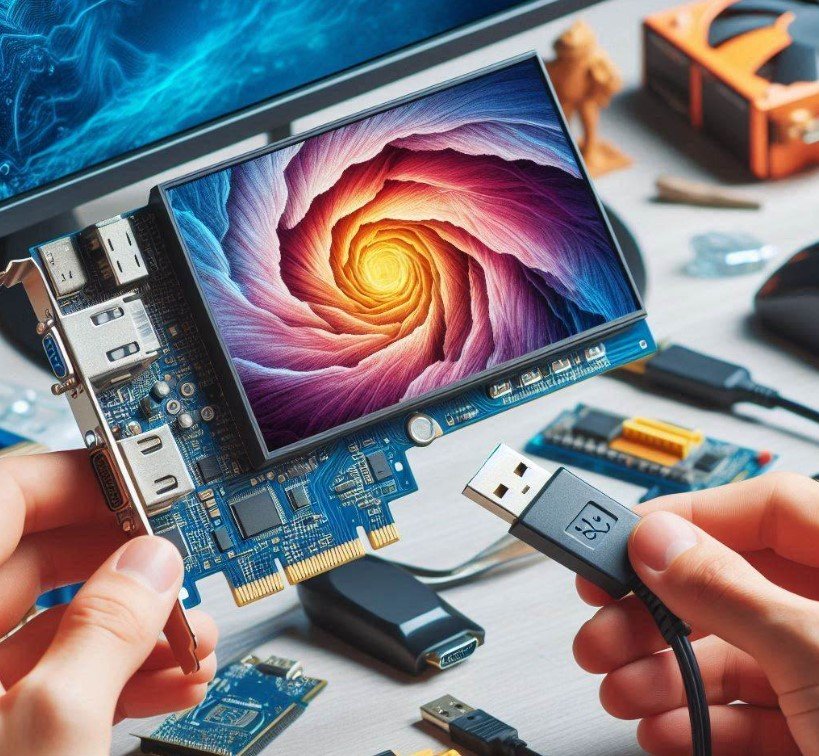
If A PC Is Without A VGA Card, Would The BIOS Detect Monitor?
Indeed, a computer without a graphics card installed can still boot. The graphics card is used for showing the image on your monitor. However, it is optional for a computer to perform its fundamental operations. It’s time to troubleshoot if your computer won’t boot up.
Most manuals advise removing everything, but the CPU and one memory stick should be removed to check if it boots. This depends on the BIOS and settings of the specific motherboard model and manufacturer.
When a GPU (PCIe or onboard) is absent, some BIOS will detect this and permanently halt the boot process while beeping a code is generated. This implies that a GPU is required to use these motherboards. However, some have a setting that allows boot with a GPU initially installed.
Progress, finish, and load the operating system at the subsequent boot, GPU or not. The motherboard’s specs frequently need to specify what it is capable of explicitly; thus, the only way to know for sure is to use it.
Understanding Integrated Graphics with USB to Display Adapter
These are completely self-contained and very basic display adapters. Don’t anticipate being able to stream 4K video using any of the USB ports—I, II, III, etc.—because their bandwidth is far less than that of a dedicated card.
The integrated GPU, sometimes called an iGPU, is the most popular laptop GPU. A computer will likely include an integrated GPU only if designed for demanding tasks. For the majority of routine jobs, they are ideal.
Contemporary integrated GPUs can handle more complex activities like light-duty gaming or content creation. AMD RadeonTM graphics and Intel® Iris Xe graphics are two examples of popular integrated GPUs.
Do All Monitors Need VGA?
No, a VGA cable is unnecessary, but a video cable—whether it be HDMI, DVI, VGA, or Display Port—is. Verify that your monitor is plugged in (video cable to PC, power cord to wall, UPS, or surge strip).
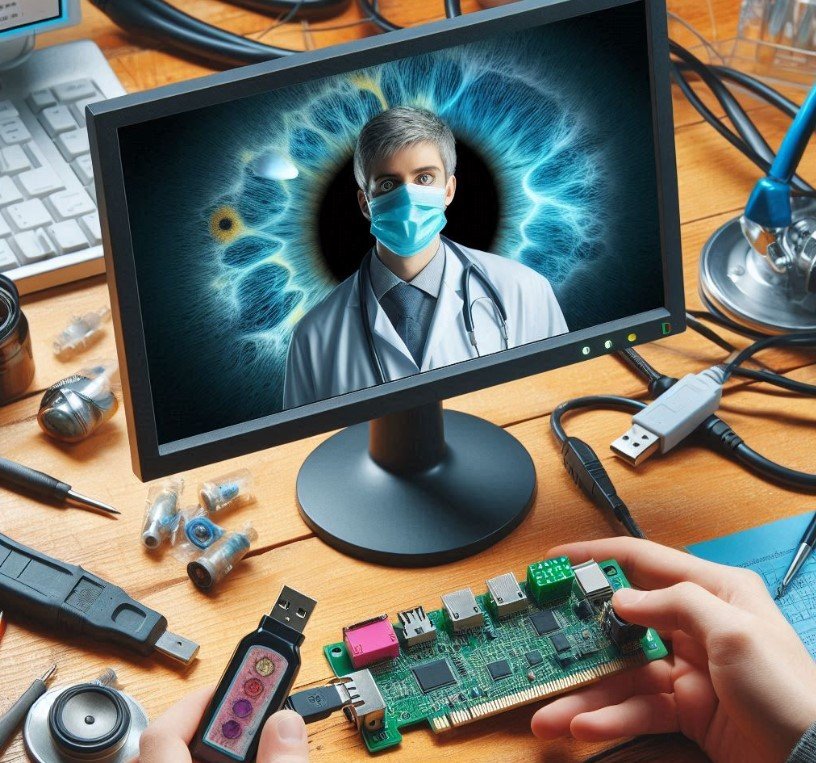
You might need to use one of the monitor’s buttons to choose “HDMI” because some monitors aren’t intelligent enough to recognize the video source. This button will only switch between the monitor’s available ports.
You have the capacity for more than one video card or video port. If your computer has a VGA connector, you can troubleshoot by booting into Safe Mode or switching to VGA. Assuming you receive a video signal before Windows loads.
Your PC’s graphics card or cards may support more than VGA, but your monitor only supports VGA. Purchase a more recent monitor in this scenario with the display port(s) corresponding to your graphic card(s).
Does A USB Monitor Use The Graphics Card?
Yes, an external display requires a graphics card. The video output that is transmitted to the monitor is generated by the graphics card. Your computer may use the integrated graphics processing unit (GPU) included in the CPU if it lacks a specialized graphics card.
Connecting an external monitor in this situation could still be possible, but the quality and performance might be compromised. Some displays support USB-C over DP input.
With physical connectors and cables of mini-DP or later USB-C, Thunderbolt is mostly Apple’s method of ecosystem lockdown, integrating many components into a cable+connector again derived from something else, like PCIe+DP.
Thunderbolt is outdated with USB 4. If both your GPU and display have DP over USB-C output and input, you can link them as DP to DP or HDMI to HDMI.
Can I Use USB Instead Of VGA?
You can use a VGA to USB converter to achieve your goals. It will also be sluggish and have poor visual quality. For the software to function, that person must install it. That should assist. On the market, there are several USB to VGA adapters.
Most are centered on chips made by DisplayLink, a company I used to work for. Even though you currently only have USB-2 available, buying one that supports USB 3 is worthwhile. They are superior, even in the near run, which will further prove you wrong. There is little of a pricing difference.
Can You Connect VGA To USB Monitor?
No, a VGA monitor cannot be connected directly to a USB port. USB is a digital data transfer interface; VGA is an analog video interface. There is a whole difference in the signal kinds and connection techniques.
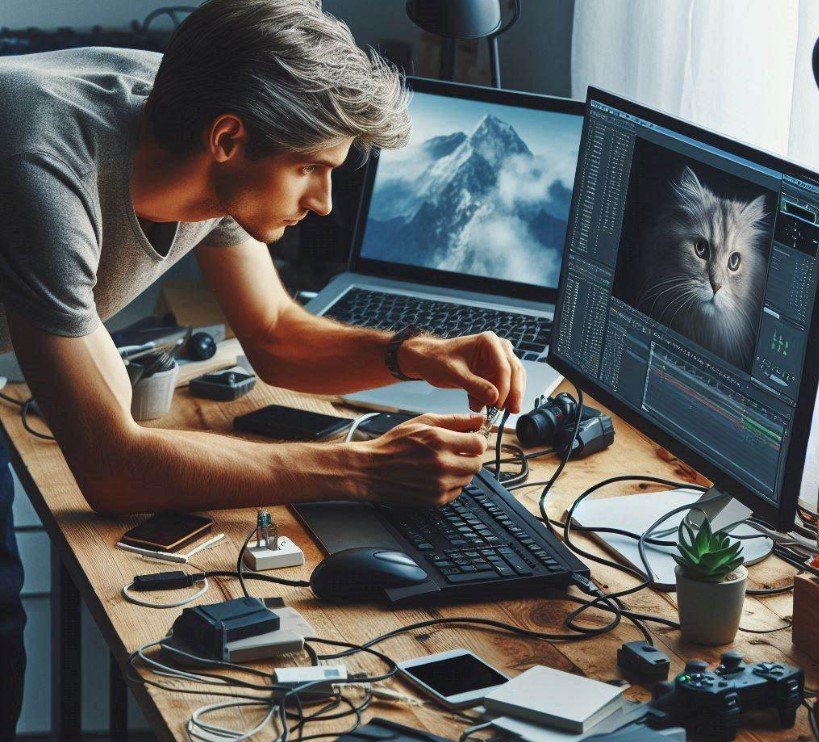
You require a visual output connector on your device to connect a VGA monitor, such as HDMI, DisplayPort, or DVI. A straight USB-to-VGA connection is not feasible. However, adapters can transform these digital video signals to the analog VGA standard.
Utilize a USB-to-VGA converter to enhance your display capabilities. With this adapter, you can effortlessly extend or mirror your display for a more immersive viewing experience, whether you’re connecting your laptop or desktop to an external monitor, projector, or TV.
The plug-and-play USB to VGA converter is a must-have item for anyone looking to enhance their visual performance, and it works with various operating systems. Take advantage of this adapter’s flexibility and ease to elevate your display arrangement.
Do You Need A Graphics Card For An External Monitor?
Only sometimes. Dual monitor capability is supported by integrated graphics found in many current PCs. On the other hand, a dedicated graphics card can provide superior performance and additional connectivity possibilities if you have specific needs or wish to use high-resolution monitors.
Regarding bit depth, the output through the VGA connector is analog rather than digital, with a maximum of 16 bits. While 3x 8bit to VGA translation is standard, 3x 10bit to VGA will not function, and even if it did, the color gamut that can be sent over an analog line would remain the same—a few VGA allusions.
Do External Monitors Have Their Own GPU?
No. Depending on the port that you plug it into, yes. It will use the laptop’s dGPU if the port is linked to it. These days, the majority of gaming laptops have the dGPU connected to the USB-C connector and the iGPU attached to the HDMI connection. This varies depending on the laptop, so I advise checking yours first.
Can You Connect A VGA Monitor To A USB Port?
All you need to do to get ready for work or play is connect to a display that supports VGA. This converter is USB 2.0 backward compatible, so you can use it with an older computer.
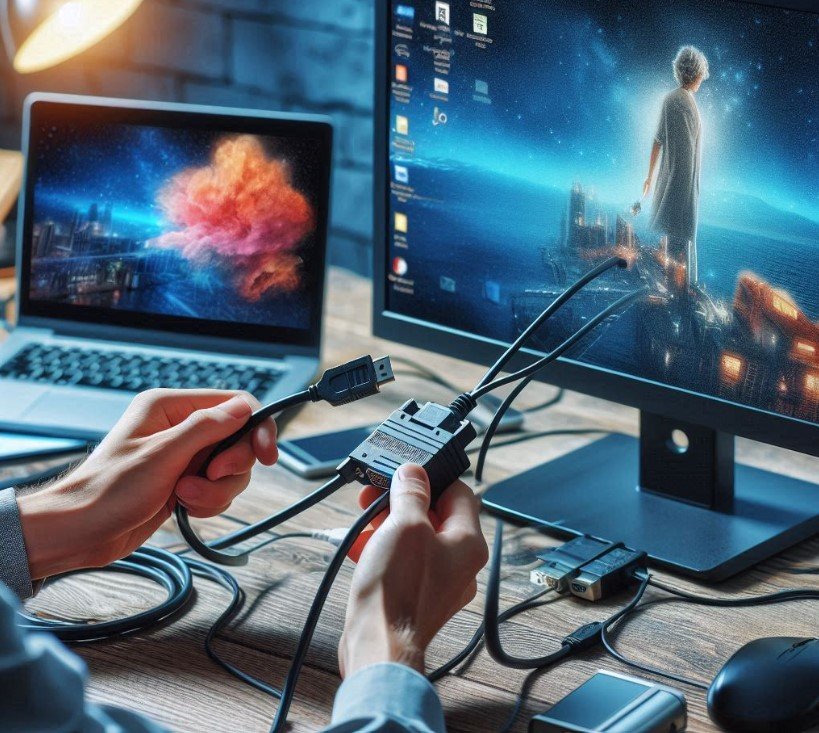
Furthermore, Best Buy supports it, so you know you can rely on it to improve your computer setup. Additionally, USB-to-DVI and USB-to-VGA converters are available, and a USB-to-DVI converter can be made by attaching a passive adaptor to an active USB to an HDMI adapter (on the HDMI side).
Additionally, while operating your trade show exhibit or design booth, you can come into contact with USB-C when working with iPhones, Macbooks, and iPads. New screens usually have a USB-C to USB-C or HDMI/DisplayPort connector for these situations.
You’ve come to the right site if you’ve been curious about the potential of USB to HDMI connections and are searching for professional advice to turn your next trade exhibition into an incredible success!
Can You Use A Monitor Without A Graphics Card?
Indeed, a display may function without a separate graphics device. A dedicated graphics card is not necessary for monitor operation in the following scenarios:
Integrated Graphics
Many contemporary CPUs are equipped with integrated graphics, which enable the CPU to manage simple visual processing. This implies that you can use integrated graphics rather than a separate graphics card by connecting a monitor straight to the video output ports on the motherboard.
Onboard Graphics
Certain motherboards have onboard processors that can drive a monitor, eliminating the need for an external graphics card. While these processors are usually less potent than specialized graphics cards, they might still be adequate for simple tasks and low-end games.
Older Computers
More antiquated computers Dedicated graphics cards were frequently absent from older computers, particularly those manufactured before the year 2000. The CPU’s integrated graphics or an onboard graphics chip would power the monitor.
A dedicated GPU provides higher visual capabilities, while a display without one cannot. This is the biggest drawback. However, a specialized graphics card is optional for basic video playback, web browsing, or ordinary productivity tasks performed on a display.
Do USB Displays Use The GPU?
It all relies on the video/monitor driver; most are inexpensive and need passthrough using an onboard or dedicated GPU. It looks like the USB standard is a dumpster fire. Some simply state USB C without mentioning the type of communication they employ.
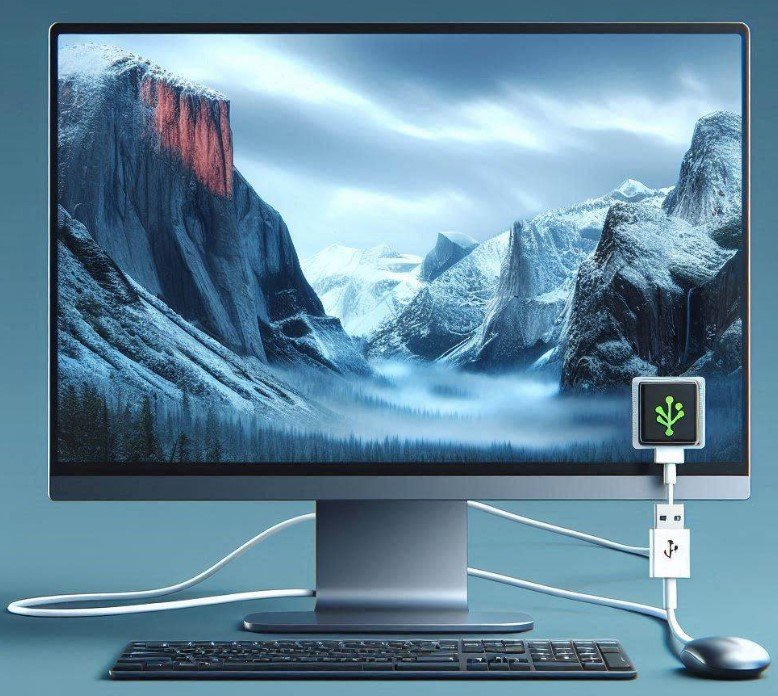
Some have brought up USB C DisplayPort. Some have brought up USB-C-based Thunderbolt. Some displays I’ve seen have HDMI connectors, so I could attach them to the GPU to watch the video.
However, they don’t say if using a USB cable in addition to the HDMI wire allows you to stay in touch. Suppose you own an outdated Surface Pro 3 tablet and an outdated i7 980 desktop computer. Essentially, you can only play games on a desktop.
The surface is meant for regular browsing. The surface is never able to move with you. But lying down feels more comfortable than working at a desk. I decided to make one build to meet both needs rather than buy two new PCs to replace them. Imagine a tablet-like device connected to a towering PC.
Does A USB-C Port Have To Be Connected Directly To Video Card?
Yes, Thunderbolt, which can genuinely send video over USB-C, is what you need to connect a video card to a USB-C Port. A Thunderbolt card often has a USB C out and a passthrough video in. If you are on AMD, it can end up being less expensive to purchase a new monitor.
DisplayPort and HDMI “Alt Modes” can be transmitted using USB-C. A video card must be attached to the monitor if just one or both are supported. If the GPU doesn’t have USB-C, you might still be able to connect it to it with an adaptor cable (USB-C to DisplayPort or USB-C to HDMI, for example).
In this case, the monitor would require its power supply. Manufacturers of monitors may also include a chipset that enables the monitor to function as a USB graphics card when the proper driver is installed. This chipset is compatible with USB 3 computers, including Type A computers, provided the appropriate cable is used.
How To Get Display Without Graphics Card?
If you want display output, you’ll need a display adapter, sometimes known as a video card. GPUs are not present in every display adapter. These links help you distinguish between the two.
Up until the late 1990s, all computers used screens without GPUs. Computers can function with or without screens that are totally created by software; they do not require a GPU or even a display connector.
But to connect a physical monitor, you’ll need a display adapter because it needs a physical port. As mentioned by ̬デcʜιჇ007, many of what people refer to as “graphics cards” really feature GPUs, although this is not a must as many display adapters, especially those made for servers, do not.
Unless you purchase a server board with integrated GPU-less or networked display output, you will require a display adapter to attach a monitor, given that you want a GUI to perform an install.
Although purchasing a CPU with a built-in GPU (such as an i5-6600K or E3-1225V5) would be simpler, you would still require a primary graphics card.
How Do I Use My Integrated Graphics Without Having A GPU?
Removing the GPU is the simplest approach to converting to integrated graphics. However, doing so necessitates disassembling the case and handling fragile parts. If you wish to switch to integrated graphics temporarily, it is preferable to adjust the output method in the BIOS.
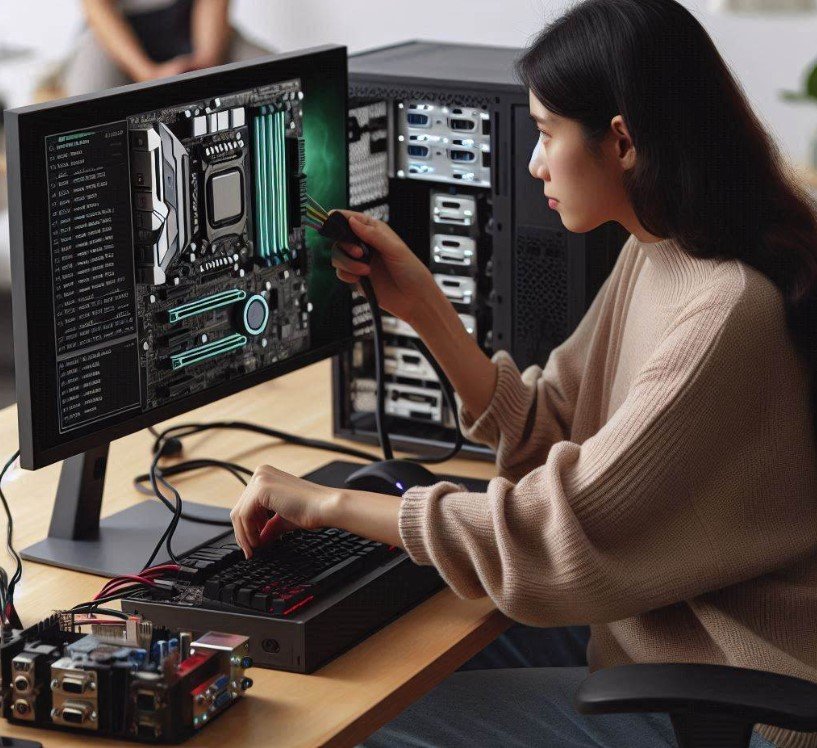
- Turn on the computer again, and the BIOS will load. To access the system BIOS, each motherboard manufacturer has a unique key; nevertheless, this information ought to appear during the restart.
- Locate the graphics configuration by opening the settings menu. Once more, this parameter is located differently on each motherboard; however, it is located under Advanced on MSI boards.
- Convert PEG to IGD.
- Close the BIOS after saving.
How To Connect Monitor To PC Without VGA?
When attaching a monitor without a VGA port, there are a few choices available:
- HDMI: HDMI connectors, which offer high-quality digital video and audio connections, are found on many contemporary monitors and TVs. You can link your device to the monitor via an HDMI cable if it has an HDMI output.
- DisplayPort is another widely used digital video interface for connecting a monitor. If your device has a DisplayPort output, you can connect it to the monitor using a DisplayPort cable
- DVI: An older digital video standard still used on certain displays and devices, DVI can be connected to an HDMI or DisplayPort using a DVI-to-Adapter if the monitor has a DVI port.
- USB-C or Thunderbolt: More recent laptops and devices may have a USB-C or Thunderbolt port that supports video output. With a Thunderbolt or USB-C port, you can connect the monitor to an HDMI converter.
- Wireless Display: You can connect a monitor wirelessly and cordless with some devices and monitors that support wireless display technologies like AirPlay or Miracast.
The ports on your device and the monitor will determine the connecting technique. If you want the connection to function, you should buy a suitable cable or adaptor.
How to Use A USB-C Monitor/Screen With A Graphics Card?
You must manually choose USB Type-C input. To choose any input, including USB Type-C, select Input from the OSD menu.
- Attach one end of a VGA cable to the source device’s VGA port and the other to the display device’s VGA port.
- Attach one end of a DisplayPort cable to the source device’s DisplayPort connection and the other to the display device’s DisplayPort connector.
- Attach the Mini DisplayPort connector on the display device to one end of a Mini DisplayPort cable and the DisplayPort connector on the source device to the other.
- Attach the display device’s HDMI port to one end of an HDMI cable and the source device’s HDMI port to the other.
- Attach one end of a USB Type-C cable to the source device’s USB Type-C port and the other to the display device’s USB Type-C port.
When I Plug A Portable Monitor Into USB, Is It Being Run By The CPU Or GPU?
USB monitors are CPU-powered at all times. They make use of a DisplayLink driver. You may have a process with that name that consumes much CPU time in your task manager. Yes, provided that GPU has a USB-C port.
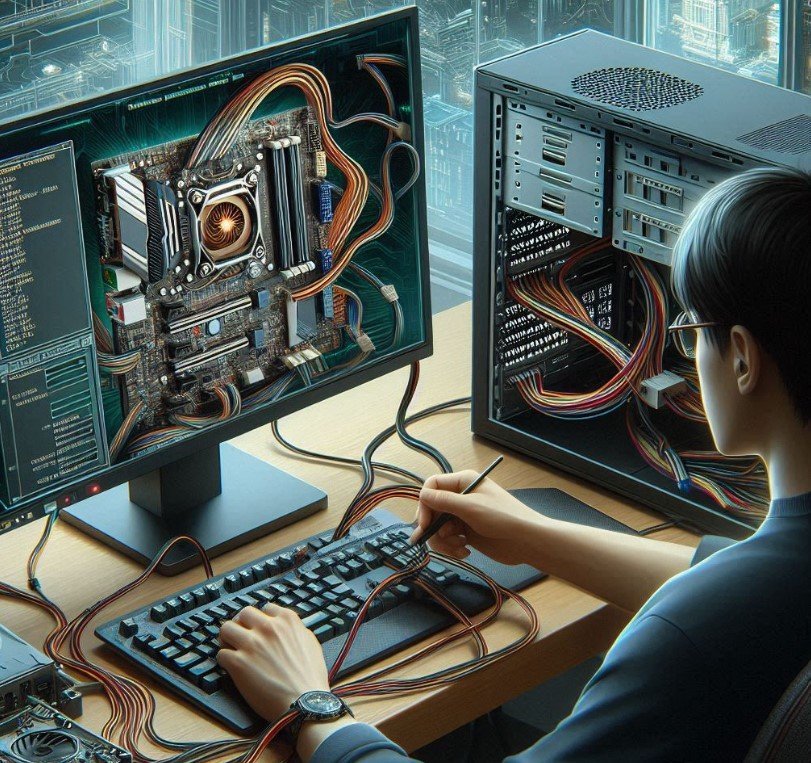
If you have an adaptor, it usually has to be an “active” adapter rather than a passive one. For example, in the past, to operate three monitors, you needed one or two DVI connections in addition to an active VGA->DVI adapter to display the third monitor as an actual display rather than merely a mirror of the primary one.
Can USB-C Ports On Video Cards, Power Portable Monitors?
Yes, it is provided that the portable monitor in issue consumes less than 27w. It can deliver up to 27w. You most likely already knew this, but the GPU’s USB C port also connects the device to the host for data in addition to power and visual signal.
In other words, some displays use the same wire to power USB hubs and KVM switches. (It doesn’t function without an intermediary USB to DP adapter or similar). Link peripherals to your display to get started. However, that is only observed on standard large panels; the “single USB C cable also powers the display” scenario is not present.
Can My RTX 3080Ti Power A USB C Portable Monitor Through DisplayPort?
No, the GPU won’t output the power required to power the display using the Displayport to USB-C connector because the Displayport doesn’t carry electricity. According to the monitor’s specifications page, it needs 15W of power.
These cords are typically used to connect a laptop’s USB C port to a DP monitor. The monitor is built to operate with USB C on both ends because USB C can supply both power and DisplayPort signal.
Conclusion
A VGA card is not required for a USB monitor. A USB monitor uses a USB connection to share signals. It only requires a VGA card if it can handle USB ports and the necessary software.
Most USB Framebuffer devices will never be recognized by the BIOS as a workable display adapter (in many cases, inexpensive USB framebuffer devices do not include the firmware ROM chip as a cost-saving measure, relying instead on a firmware to be sent over USB to the device’s memory to start up).
However, if you can get the board to boot Linux somehow, the USB monitor should light up once it is discovered and probed and receives firmware from the drivers.
Frequently Asked Questions
Does the graphics card get used by a USB monitor?
It would be best if you plugged your DisplayLink-based display into a computer’s USB-C port. The computer’s software will use the GPU but send the image through the USB connector instead of the HDMI port.
Can I use VGA with USB instead?
Yes, but depending on the device, you’ll need an adapter to make it work. Most PCs and, these days, most phones and tablets can do so.
Can a display be powered via USB?
If your monitor supports a high-power supply, you can use USB-C to connect a compatible laptop to it, display an image from it, and charge it with a single cable, saving you from needing to put in an external power cable for the laptop.






